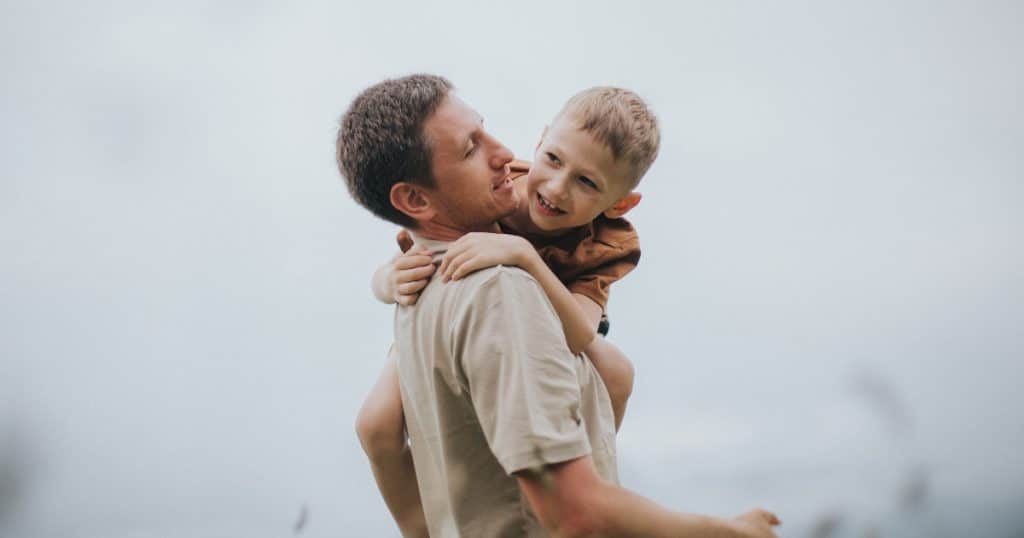Hugging is a standard manner for folks to precise affection to one another. Nonetheless, many individuals have totally different consolation ranges relating to bodily contact, making respecting private area crucial.
In the case of autism and hugging, responses can fluctuate tremendously as a result of sensory sensitivities and distinctive social dynamics. It’s essential to not generalize, as every individual has their very own consolation stage with bodily affection.
Some people could love hugs as they supply a relaxing and soothing sensation. Nonetheless, others could discover hugging uncomfortable or overwhelming as a result of sensory sensitivities or private boundaries.
Obtain your FREE information on
Sensory Processing Dysfunction The Final Information
Why hugging preferences fluctuate in autism
Autistic people usually expertise sensory enter in a different way from others. These sensory preferences can immediately affect how autistic kids understand hugging.
Autistic people usually expertise both hypersensitivity, the place they react strongly to the touch, or hyposensitivity, the place they’ve a decreased response to it.
Whereas many individuals could discover hugging to be a pure technique to specific affection, some autistic folks could really feel that it doesn’t come naturally to them. This may make hugging appear complicated or pointless.
For instance, an autistic girl has been buddies with somebody for six months. After an evening out, her good friend gives a hug, considering they’re shut sufficient.
The autistic girl declines and asks for a excessive 5 as an alternative.
Initially confused, the good friend later understands and respects her boundaries, selecting to not supply hugs sooner or later.
Autism and tight hugs
Many autistic folks take pleasure in tight, deep-pressure hugs as a result of such a movement can tremendously calm their emotional well-being. The strain may really feel just like how a weighted blanket can really feel.
This may be tremendous useful to restrict any nervous system disturbances an individual could have, akin to nervousness and sensory overload.
Nonetheless, if the kid will get too overly sensitive or has clingy habits, folks can train them extra applicable habits whereas assembly their sensory preferences.

For instance, an autistic youngster who seeks tight hugs when excited or overwhelmed could obtain hugs from members of the family when applicable. Nonetheless, they have to additionally remind him about boundaries and that not everyone seems to be snug with fixed tight hugs.
The household may introduce lighter touches, like gentler hugs, or supply a weighted blanket to create a supportive surroundings.
Autism and aggressive hugging
Hugging can generally change into overly enthusiastic and even really feel aggressive. In such instances, it’s essential to handle the habits, notably if it makes others uncomfortable.
It’s essential to know that an autistic individual doesn’t need to show intentional aggressive habits. Nonetheless, this usually stems from attempting to fulfill their sensory wants, an incapacity to know social boundaries, and never having the ability to perceive if their hug is just too tight or not.
When discussing habits, it’s essential to clarify what forms of bodily contact are applicable, like giving a teammate a fist bump after a objective. It’s additionally essential to show the significance of respecting private area.
For instance, a therapist may create social tales. These tales may clarify when hugs are applicable, akin to greeting somebody after a very long time aside. They may additionally emphasize that hugging strangers or aggressive hugging needs to be averted in social conditions.
Challenges with private area and social dynamics
Autistic children and adults can usually have bother studying the room. They could have problem understanding social norms with private area and bodily contact.
Typically, they could not acknowledge when an individual is snug or uncomfortable with a hug till they inform them to not.
You’ll be able to train the individual applicable social expertise, like asking for a hug as an alternative of approaching somebody with out permission. It’s additionally essential to emphasise that they need to all the time settle for “no” and never insist additional.
As well as, you’ll be able to assist them by educating phrases akin to, “Is it okay if I offer you a hug?” as an alternative of “Could I please have a hug?”
Use visible cues for private area, akin to no squeezing when hugging. Attempt educating other ways to precise affection, akin to waving or smiling. Function-playing totally different eventualities may also be efficient for the individual’s social growth.
Suggestions for encouraging constructive hugging experiences
To encourage secure and constructive social interactions round hugging, discover a stability between serving to the individual respect boundaries and offering sufficient help.
Contemplate the next:
- Speak about looking for consent: Have them perceive that they need to all the time ask if a hug is welcome, both verbally or by merely spreading their arms out, not too near the individual.
- Present what a mild hug appears to be like like: It is best to mannequin a mild hug and clarify how a light-weight hug can nonetheless be significant.
- Make good use of sensory enter alternate options: If the individual is very eager on tight hugs, you’ll be able to supply weighted blankets, agency hand squeezes, or different deep-pressure actions.
- Assist them perceive boundaries: Have the individual perceive that if a person doesn’t desire a hug, they need to respect that boundary and discover different constructive methods to attach. Present alternate options, akin to giving a praise that isn’t too over-the-top.
Understanding and respecting autism and hugging preferences
What many individuals might even see as a easy bodily gesture might be one thing that autistic folks could give lots of thought to.
Everybody ought to respect boundaries, no matter whether or not they adore hugs, desire tight ones over gentle ones, or don’t need them in any respect.

Obtain your FREE information on
Sensory Processing Dysfunction The Final Information
Whenever you prioritize robust communication and train an understanding of consent, you create a supportive area in your autistic beloved one.
FAQs
Q: How does somebody with autism present affection?
A: Autism is a spectrum, so there are a lot of methods wherein they specific affection. They’ll spend time with folks they care about, take part in shared actions, or have bodily contact with others.
Q: Do autistic folks like hugs?
A: Preferences can tremendously fluctuate from individual to individual. Some could adore hugs, particularly after they’re agency, whereas others could really feel overwhelmed by them.
Q: Can autistic folks be cuddly?
A: Some can totally take pleasure in cuddling, notably if it meets their sensory wants, however this may occasionally not apply to everybody.
Q: Why don’t some autistic folks like hugs?
A: Some autistic folks could keep away from hugging as a result of they aren’t snug with bodily contact, have robust sensory sensitivities, or have robust private boundaries with it.
References
Christopher, S. (2019). Contact hypersensitivity in kids with autism–An evaluation. Worldwide Journal of Analysis and Analytical Evaluations, 6(2), 616-622. http://ijrar.com/upload_issue/ijrar_issue_20543588.pdf
Chaidi, I., & Drigas, A. (2020). Autism, expression, and understanding of feelings: literature evaluation. https://www.learntechlib.org/p/218023/
Candini, M., Giuberti, V., Manattini, A., Grittani, S., di Pellegrino, G., & Frassinetti, F. (2017). Private area regulation in childhood autism: Results of social interplay and individual’s perspective. Autism Analysis, 10(1), 144-154. https://onlinelibrary.wiley.com/doi/abs/10.1002/aur.1637
Georgiou, A. (2021). ” I don’t thoughts folks hugging me once I’m comfortable”: autistic people’ expertise of feelings on their sensory world: an interpretative phenomenological evaluation (Doctoral dissertation, London Metropolitan College). http://repository.londonmet.ac.uk/id/eprint/6984


